The hidden messages in LACMA’s massive stamp painting, ‘Camouflage’
- Share via
Abdulnasser Gharem is a self-taught artist who spent 23 years in the Saudi Arabian army, eventually rising to lieutenant colonel. Life in the military was bureaucratic, a world populated with procedures, protocol and paperwork — “rejected,” “accepted,” “check paid,” he says.
Which explains why Gharem’s work is brimming with stamps — as subjects and as material to construct his art. His stamp paintings are textured, bumpy canvases made up of rubber stamps. And they’re brimming with hidden messages, read backward, like a stamp. Here he helps us to deconstruct one painting, the aptly titled “Camouflage.”
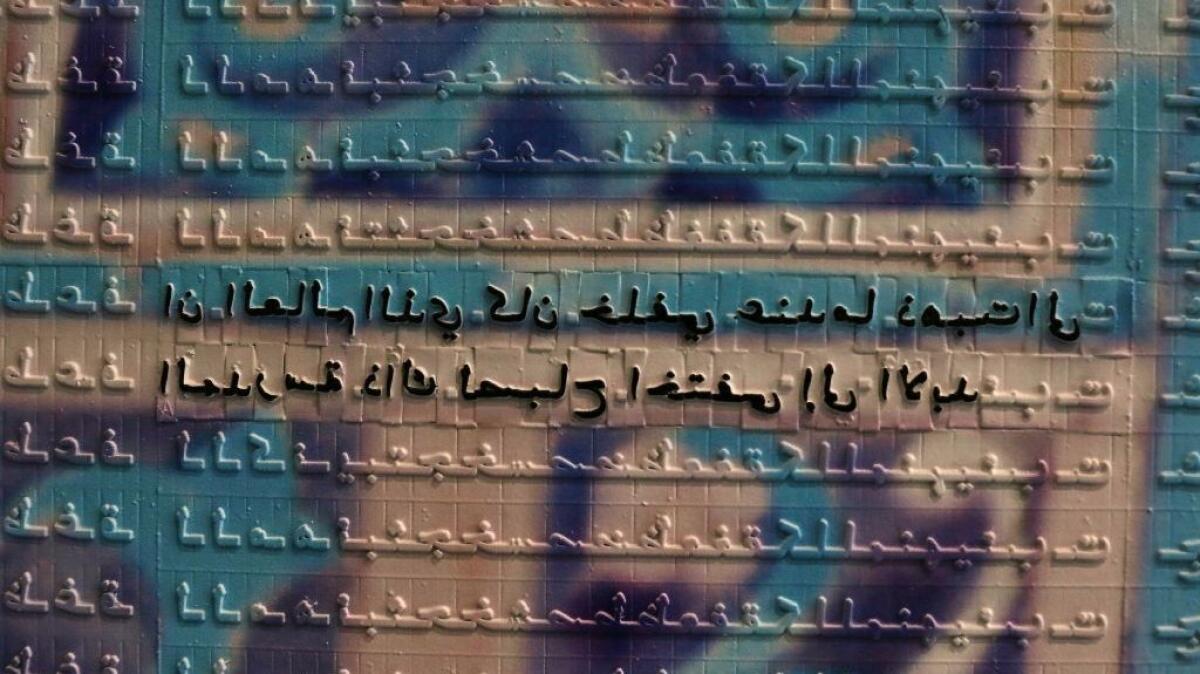
The artist’s process:
To make his stamp paintings, Gharem disassembles individual lettering on rubber stamps and paints the tiny English or Arabic characters different colors. Then he and his studio assistants reconfigure the letters on the canvas with tweezers. He digitally prints imagery on top of that, and then hand paints on top of that.
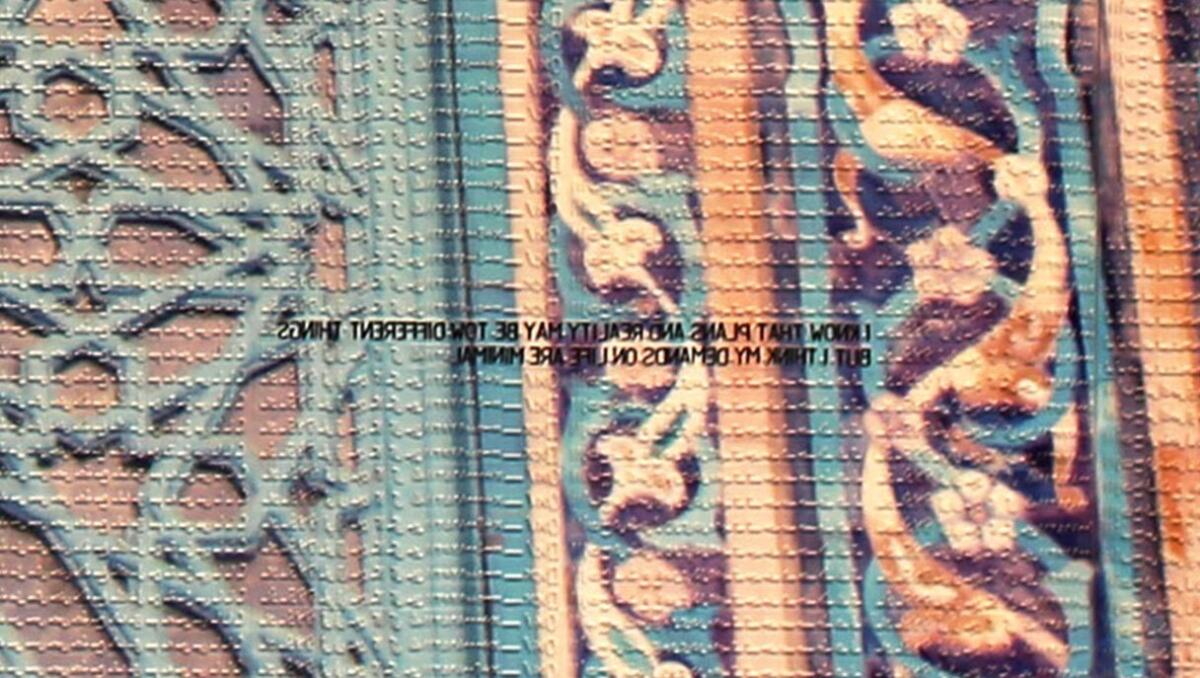
In code:
One hidden message, above, reads: “I know that plans and reality may be two different things but I think my demands on life are minimal.”
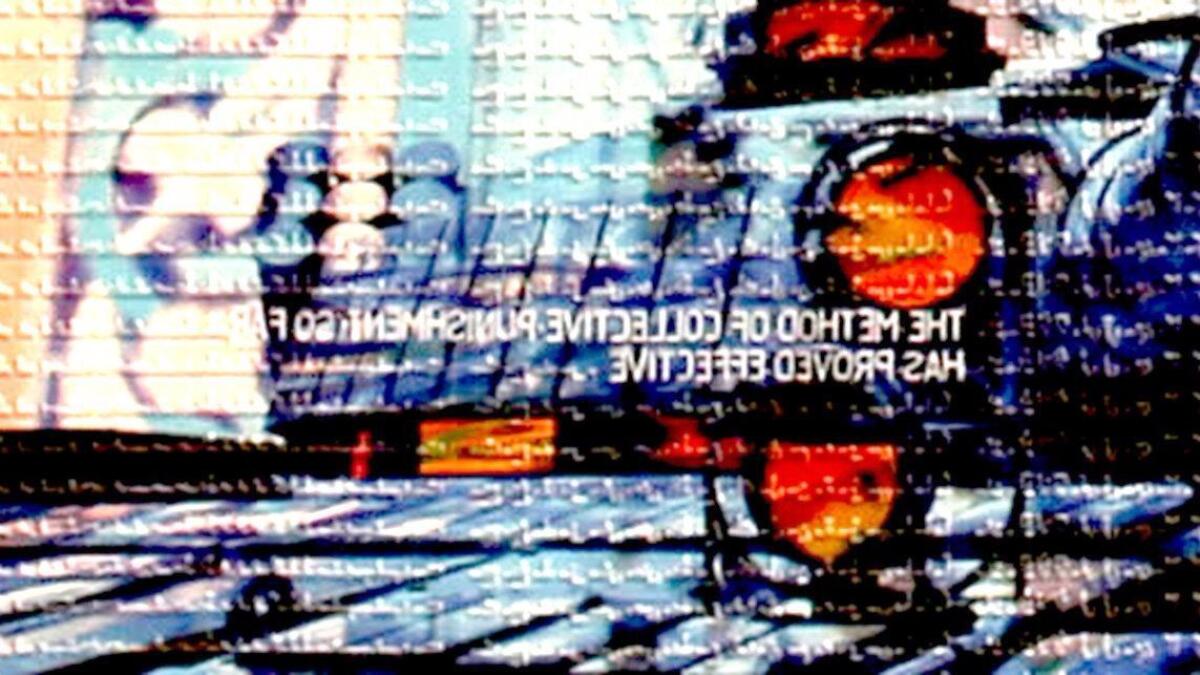
Another hidden message:
“The method of collective punishment so far has proved effective.”
THE INTERVIEW: Abdulnasser Gharem on 9/11, terrorism and his response as an artist »
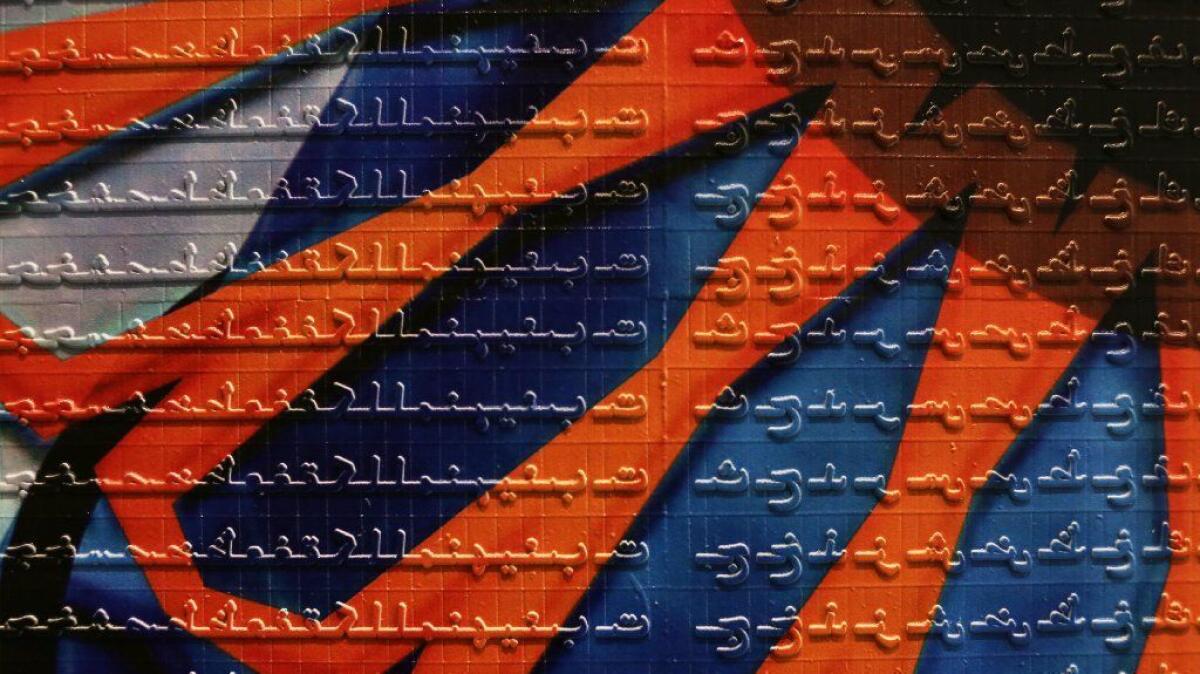
Inspiration:
The background of the image is the inside of an Iranian mosque. Gharem’s work typically incorporates motifs and artistic ideas that are part of the canon of Islamic art — geometric and floral designs, arabesques and embedded text.
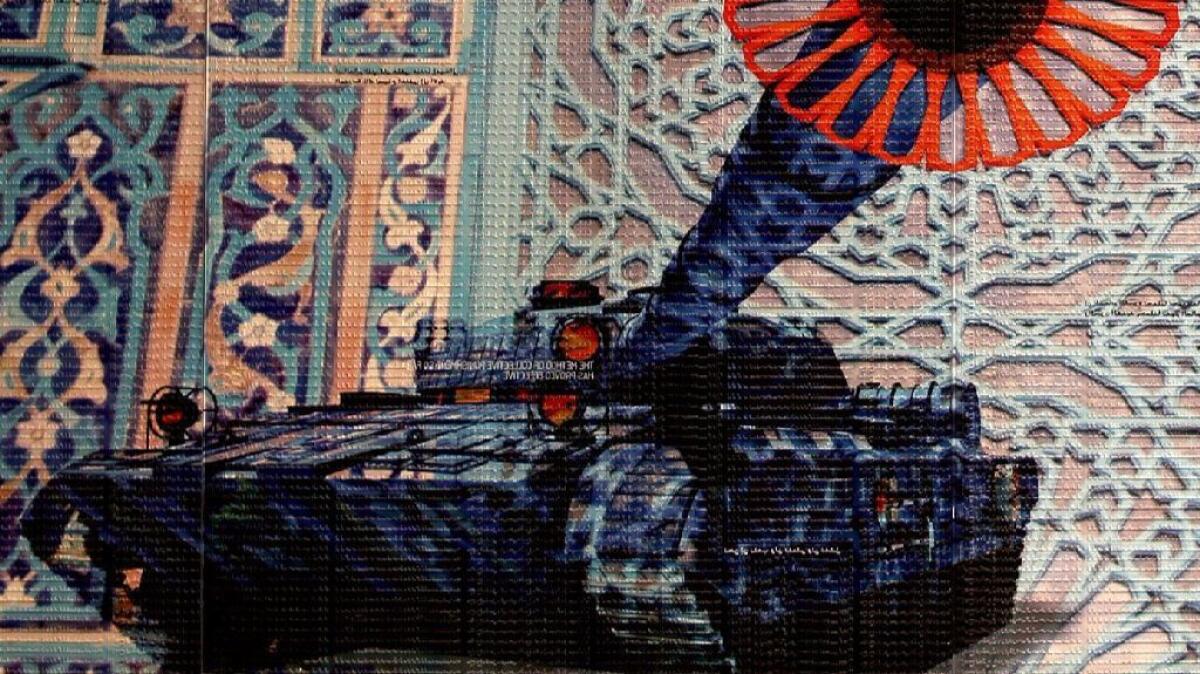
Themes:
“Camouflage” speaks to war-hungry governments, arms deals and sectarianism, Gharem says, adding that his favorite hidden message in the painting reads, “It may be that idealism requires naivety to survive.”

Stamp power:
About using stamps in his work, Gharem says: “It started from my drawer. As an officer [in the army], it was full of stamps. Suddenly I figured out how powerful this thing was.”

On the work as a whole, featuring a tank against the background of a mosque:
“The title of the piece is ‘Camouflage.’ It’s like when they are camouflaging something to be used to protect the people from the enemy, but actually they are using it against the people themselves.”
The biggest entertainment stories
Get our big stories about Hollywood, film, television, music, arts, culture and more right in your inbox as soon as they publish.
You may occasionally receive promotional content from the Los Angeles Times.








